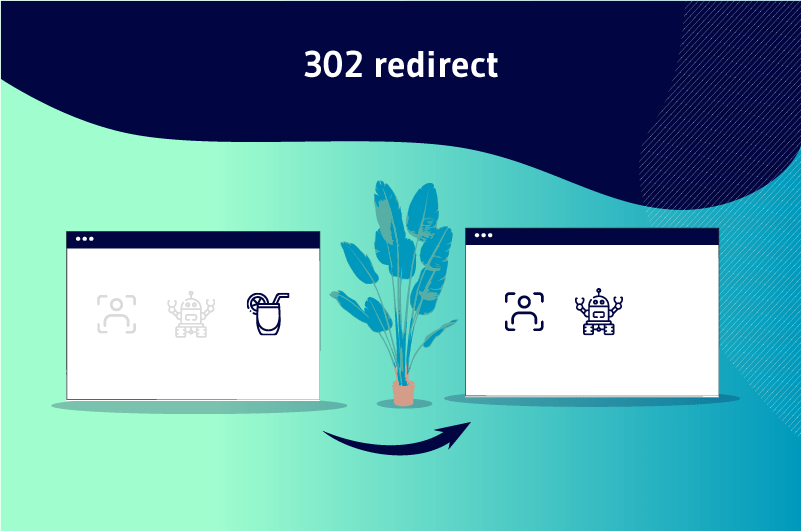The 302 redirect is an HTTP 302 code used to redirect a search engine or users to a temporarily replaced web page. It can be used on pages that are not yet active on your website or to fix 404 errors. It should be noted, however, that 302 redirection does not have a great impact on the SEO of a website.
It happens that some web pages of your site have to be removed or temporarily unavailable. This is quite normal, but when this happens, you must necessarily inform the search engines and your visitors in one way or another
The best way to do this to avoid losing traffic on these web pages is to submit a new location through a redirect.
But it is a fact that most webmasters or website owners still get confused between the different types of redirects and still don’t know which one to choose.
What is a 302 redirect?
What are the different types of redirects and the difference between them?
Which of the different types of redirects can effectively meet your SEO objectives? Let’s discover in this development all the necessary information about the 302 redirect, starting with its definition and the different ways of its creation.
Chapter 1: What is the 302 redirect, its importance and its impact on SEO?
There are different types of redirects that can be set up on a website to make technical adjustments.

In this chapter we will mainly discuss the issue of 302 redirection while emphasizing its role and importance for websites.
1.1) What does the term redirect mean?
It is necessary to know what the redirection is before going into the heart of the matter
Indeed, the redirection in SEO is a strategy used to redirect search engines and Internet users to another URL, different from that of their request.
Webmasters use redirections to direct Google’s robots to the right URLs in order to optimize the crawl and facilitate the positioning of their pages. Objectively, the practice consists of replacing a deleted URL with a new URL on the same site to allow users and search engines to find the resources they are looking for

Redirects are used at several points in the life of a website:
- Changing or modifying URLs;
- The redesign of websites;
- The modification or change of domain name;
- The creation of the https protocol;
- Etc.
There are generally three types of server-side redirections that allow a user or a search engine to be redirected permanently or temporarily to a new URL. These are:
- The 301 Redirect;
- The 302 redirect;
- The 307 redirect.
The 301 redirect is a permanent redirection. It is the most common type of redirection and the most used in SEO.
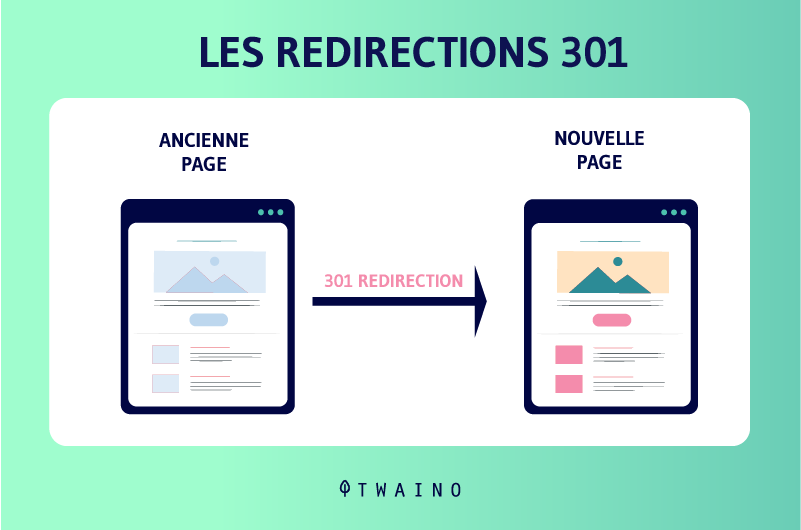
It allows you to easily generate traffic on a new page while preserving the quality of the user experience. On the other hand, the 302 redirect is a temporary redirect and allows to lead Internet users and search engines to a new URL for a defined period.
The 302 redirect is the type of redirect that is the subject of this article.
1.2 What is a 302 redirect?
À basically, the 302 redirect is a way to notify a search engine or Internet users that a web page has been temporarily moved. It allows webmasters to direct web browsers to redirect users to the new page for a defined period of time.
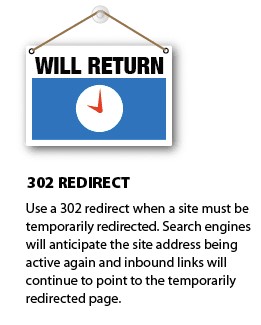
Source Oseox
When a user makes a request from a web browser, the browser sends the request to a remote web server which in turn responds with a code containing information about the requested page.
The presence of the HTTP 302 code tells the browser that the URL of the requested page has been temporarily changed or redirected to another location. The browser then processes this information and takes the user to the new, temporarily available page.
1.3. What is the importance of 302 redirection?
Although 302 redirection is not a very appropriate technique for SEO, there are some cases where it seems to make more sense
Admittedly, these cases are less common and are mostly related to e-commerce.
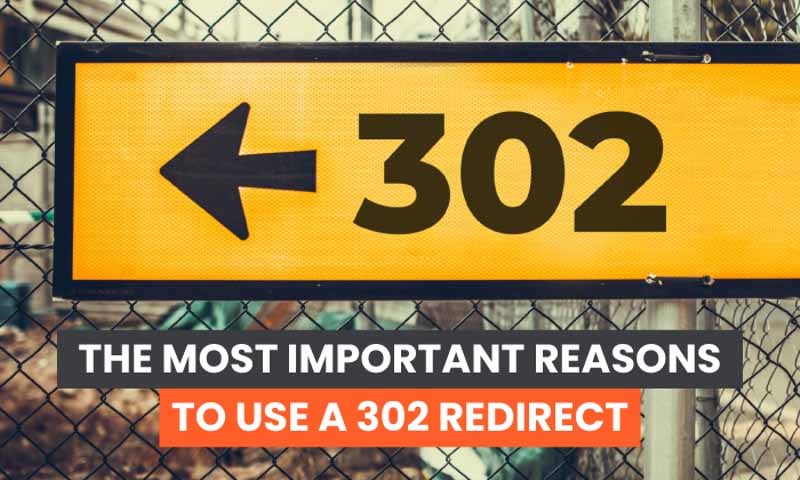
Source Neil Patel
Let’s take as an example an e-commerce site that offers cosmetic products.
When one of the company’s products is out of stock, such as a seasonal product, the e-merchant may consider redirecting customers from that specific product page to another page in a similar category.
Since the requested product is not available, the e-merchant will use the 302 redirect to offer users other products in the same category.
Similarly, when the company decides to introduce a new product, the e-tailer can create a specific page for this product.
However, it will be difficult to generate traffic quickly to make the page visible and make sales.
So the e-merchant can set up a 302 redirect to temporarily drive visitors from his main category to the specific product page.
The 302 redirect would also be more appropriate when you want to test the functionality or design of a website through A/B testing.
It is a good technique to launch a website and see which version is more appropriate or offers a better experience to users
By performing 302 redirection, you will gather feedback as well as opinions from your customers and users on your new page without affecting the positioning of your site.
1.4. The advantages of 302 redirection
Although the 302 redirect does not have a great influence on SEO as it is the case for the 301 redirect, we must note that each type of redirect has its own advantages and exists for a given purpose.
The presence of a 302 redirect code usually corrects 404 errors. This is the first and most important advantage of this type of redirection
Indeed, it is obvious that Google and other search engines hate incomplete links that generate 404 errors. The same goes for Internet users who have a bad experience when they click on links on your site that lead nowhere.

On the other hand, the use of 302 redirection helps to retain traffic and ensure the popularity of a web page in order to make it work again.
You can also perform 302 redirection to:
- Redirect the traffic of a website without transforming it ;
- Keep the visibility of the original page;
- Strategically increase traffic on target pages;
- Etc
Chapter 2: Difference between 301 and 302 redirects
The difference between 301 and 302 redirects remains one of the questions often asked by Webmasters. We will analyze in this part the difference between a 301 redirect and a 302 redirect from several angles
2.1. Difference in perception and treatment of redirects between Internet users and search engines
At the user level, both types of redirects (301 and 302) work in the same way without distinction
Indeed, when the user’s browser notices the presence of a redirect, whatever its nature, it redirects the user directly to the new available location
It should be noted that this operation takes place instantly without the user knowing whether it is a temporary or permanent redirection. However, this is not the case with search engines.
Instead, search engines identify each type of redirect and treat them in different ways. The presence of a 301 redirect means that the requested page has been permanently removed or replaced, whereas the presence of a 302 redirect indicates that the page has only been temporarily moved.
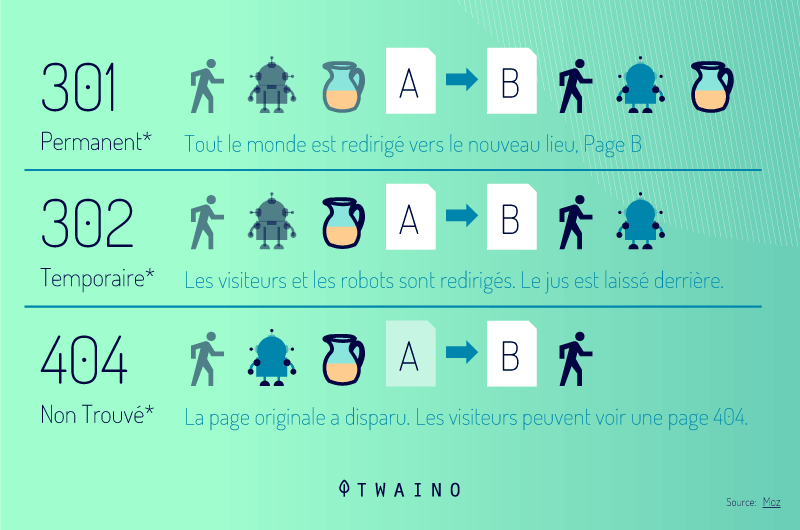
During the evaluation, the search engines determine whether the old page should be kept or replaced by the new one. Setting the wrong redirection, i.e. 301 instead of 302 for example, can therefore cause confusion for the search engines.
The immediate consequence of such an error is the loss of traffic. Before setting up a redirect, you must necessarily know the difference between each type of redirect and the different possible cases.
It is a question of knowing concretely when to use a 301 redirect or a 302 redirect
For example, when you change or modify the domain name of your site, you need to use a 301 redirect to drive visitors and search engines back to the new location and especially to avoid losing traffic.

Source Editor.com
When there is the presence of a 301 redirect, it means to Google for example that there is a site that has moved and this can cause the google’s aging delay.
In addition, the 302 redirect is often useful for online sellers in case of out of stock or seasonal products. It allows e-tailers to prevent consumers from accessing specific product pages that are temporarily empty. In addition, 302 redirection is most suitable when you want to divert visitors from 404 error pages.
2.2. Difference between 301 and 302 redirect creation methods
There is also a difference between 301 and 302 redirects from the creation point of view. Indeed, the creation of a 302 redirect seems to be easier and faster than that of a 301 redirect.
As far as setting up a 302 redirect is concerned, you can do it using a Meta tag or JavaScript
However, setting up a 301 redirect requires a long procedure and special commands in the .htaccess file if it is an Apache server.
The procedure can be even longer with many other problems if it is a Windows server
This is the reason why some people use a 302 redirect instead of a 301 redirect.
Basically, the difference between a 301 redirect and a 302 redirect is whether the redirect is temporary or permanent
The nuance is that, regardless of the type of redirection used, the final objective is to present a resource to the indexing robots and Internet users when they visit a website.
Chapter 3: How to set up a 302 redirect?
Whatever the type of redirection you want to create, you have several possibilities. Nevertheless, these possibilities are accessible or generally depend on your skills and the access you have on the concerned site.
- Use the registrar’s interface a registrar is a registration platform that allows you to manage your domain name. All registrars have an interface that allows you to create a redirection from one domain to another.
- Modifying files on the server you can also set up a redirection from an internal resource to another within your site by modifying the .htaccess file. But to do this, you need to have access to the site’s server and also some programming skills to avoid damaging the site.
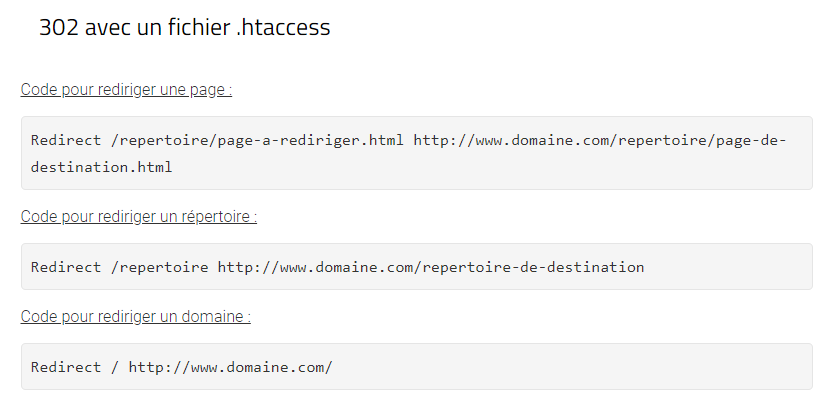
- Program the redirection on the server the use of this method requires skills in web development. The practice is to use PHP or ASP language to program the redirection. You can hire a developer who will intervene and ensure the proper functioning of the site.
- Use JavaScript it is also possible to set up redirections thanks to programming in JavaScript.
- Use extensions on CMS there are extension modules on CMS like WordPress that allow you to create redirections. It should be noted that this method does not require any skills. You just need to select the URLs carefully to avoid damaging the structure of your site or its operation.

Summary
The 302 is a kind of redirection whose role is to temporarily redirect pages or websites. This type of redirection, although it is not the most appropriate in SEO, has advantages for the functioning of websites
There are several methods to set up a 302 redirect
But no matter which method of creating a redirect you use, you should always consider the differences between the two types of redirects (301 and 302) in order to avoid mistakes and get the most out of your optimization strategies.
If you are having trouble optimizing your site or setting up a redirect, contact me!

